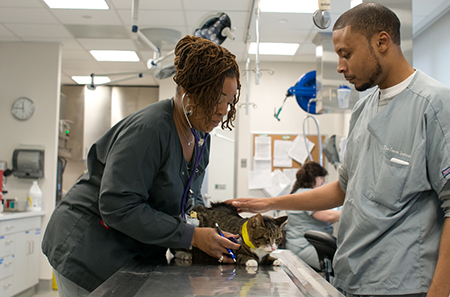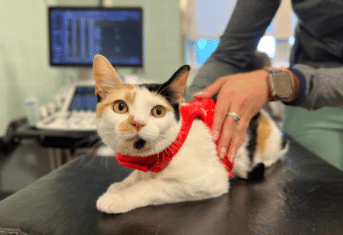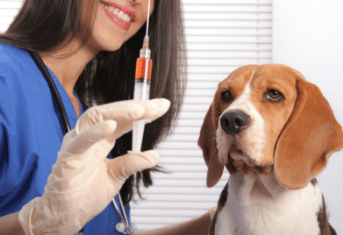Everyday Medicine: What are Vital Signs?
Everyday Medicine: What are Vital Signs?
 Everyday medicine will be an intermittent series of blog posts highlighting tests, treatments and procedures commonly used at the AMC. Some past examples of this type of blog post include “Spenser’s Recovery After Surgery” or “Five Reasons Veterinarians Love Fluid Therapy.”
Everyday medicine will be an intermittent series of blog posts highlighting tests, treatments and procedures commonly used at the AMC. Some past examples of this type of blog post include “Spenser’s Recovery After Surgery” or “Five Reasons Veterinarians Love Fluid Therapy.”
Today’s blog post will tackle the topic of vital signs, a common term used by our Emergency and Critical Care Service.
Triage
When a patient checks into the AMC ER, a call for triage is made. The veterinary technician or veterinarian assessing the patient will speak briefly with the client about the problem and collect the patient’s vital signs. The vital signs will be compared to normal and used to determine if the pet can be considered stable. This information is used to prioritize the patients waiting to be seen in the animal ER based on severity of their illness.
Vital Signs
Pulse, respiratory rate, temperature and blood pressure are considered vital signs. A stable patient has normal vital signs. A normal pulse is easy to feel on the inside of the hind legs and should be regular with a rate around 100-120 beats per minute. Auscultation with a stethoscope may be used to help confirm an irregular heartbeat. Respiratory rate can easily be counted just by observation. A respiratory rate above 40 breaths per minute is abnormal. The third vital sign, body temperature, hovers around 100oF in dogs and cats but is not considered a fever until it reaches 102.5oF. In critically ill patients, a low body temperature may be just as serious as a high one. Technically, blood pressure is not a vital sign, but it is commonly measured in the animal ER, and like vital signs, if too low or too high, a patient can be considered unstable.
Follow-Up Testing and Treatment
The ER veterinarians may order follow-up tests if the vital signs are abnormal. An irregular heartbeat will provoke an EKG. An elevated respiratory rate is further investigated by auscultation with a stethoscope and possibly a chest x-ray. To follow up on an elevated body temperature, a blood count is commonly submitted to the lab. Administration of intravenous fluids helps to bring blood pressure up or fever down.
Beyond Vital Signs
In the animal ER, other parameters are assessed to help determine if a patient is stable. Gums are checked for moistness and the skin rebound is observed. Dry gums and a slow skin rebound are signs of dehydration. Gum color is checked as an indicator of anemia and can be quickly monitored via a packed cell volume, or PCV, to determine the presence or absence of anemia. The patient’s level of consciousness is also assessed and even if the vital signs are normal, if a patient is unresponsive, they will be deemed unstable.
An experienced ER veterinarian can make an assessment of whether or not a patient is stable in just a few minutes. If your pet visits the animal ER and they are deemed stable, you might be unhappy because of the wait, but you should be relieved that your pet is stable and does not need to immediately whisked away for rapid intervention because of unstable vital signs.

































